Understanding Autism in a Unique Cultural Context
Autism spectrum disorder (ASD) has long been a subject of widespread research, debate, and misconceptions across diverse communities. The Amish, known for their traditional lifestyles and distinct cultural practices, have often been at the center of curiosity concerning the prevalence and causes of autism within their population. This article examines the current scientific understanding of autism among Amish children, explores myths and misconceptions, and highlights ongoing research efforts that shed light on this neurodevelopmental condition across different communities.
Prevalence of Autism Among Amish Children
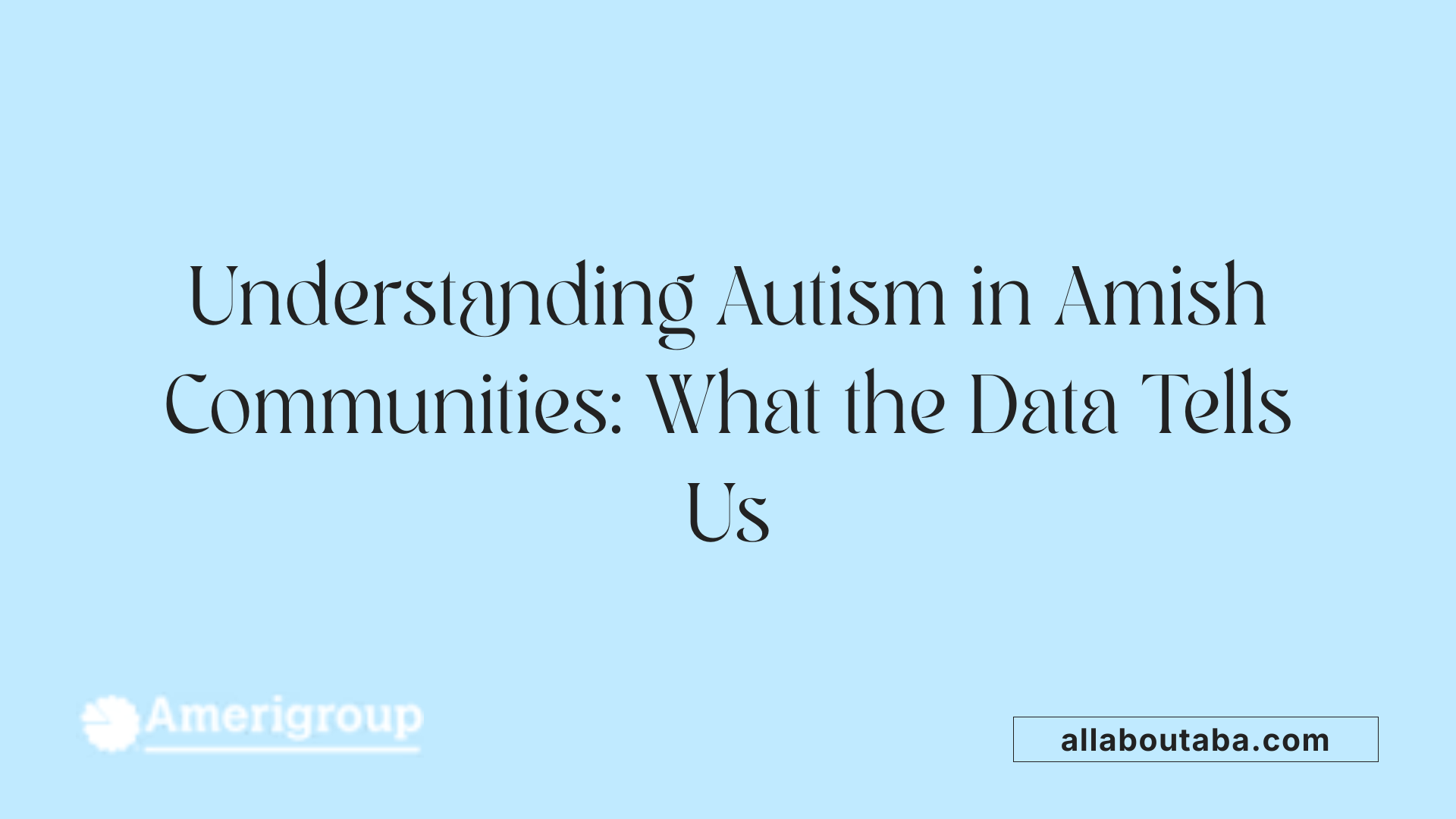
Are Amish children affected by autism, and what is the prevalence within this community?
Research shows that autism spectrum disorder (ASD) is present among Amish children, but significantly less common than in the wider population. A preliminary study involving nearly 1,900 children aged 3 to 21 from Ohio and Indiana estimated the prevalence to be around 1 in 271 children. Notably, in Ohio, autism cases among Amish children might be as rare as 1 in 15,000, with some local doctors reporting never seeing autism in their Amish patients.
This lower prevalence could be influenced by multiple factors, including cultural attitudes towards behavioral reporting and the community’s historical low vaccination rates. While most Amish children do receive some immunizations—approximately 86% according to recent surveys—many refuse certain vaccines due to religious beliefs.
In addition, recent genetic research found a connection between autism and mutations in the CNTNAP2 gene among a small Amish cohort, particularly in children with focal seizures and regression. This suggests that, in some cases, autism may have a genetic component specific to this population.
Studies from other groups also support the idea that autism rates vary between populations. For example, Hispanic children tend to have lower reported rates of autism, which could be due to underdiagnosis or cultural differences in recognizing and reporting symptoms.
Despite the rarity, autism does exist within Amish communities. However, overall, the incidence remains lower than in the general U.S. population, which is about 1 in 166 children. The reasons for these differences are still under investigation, and further studies are needed to fully understand autism prevalence and causes within this unique community.
Genetic Factors and Autism in Amish Children
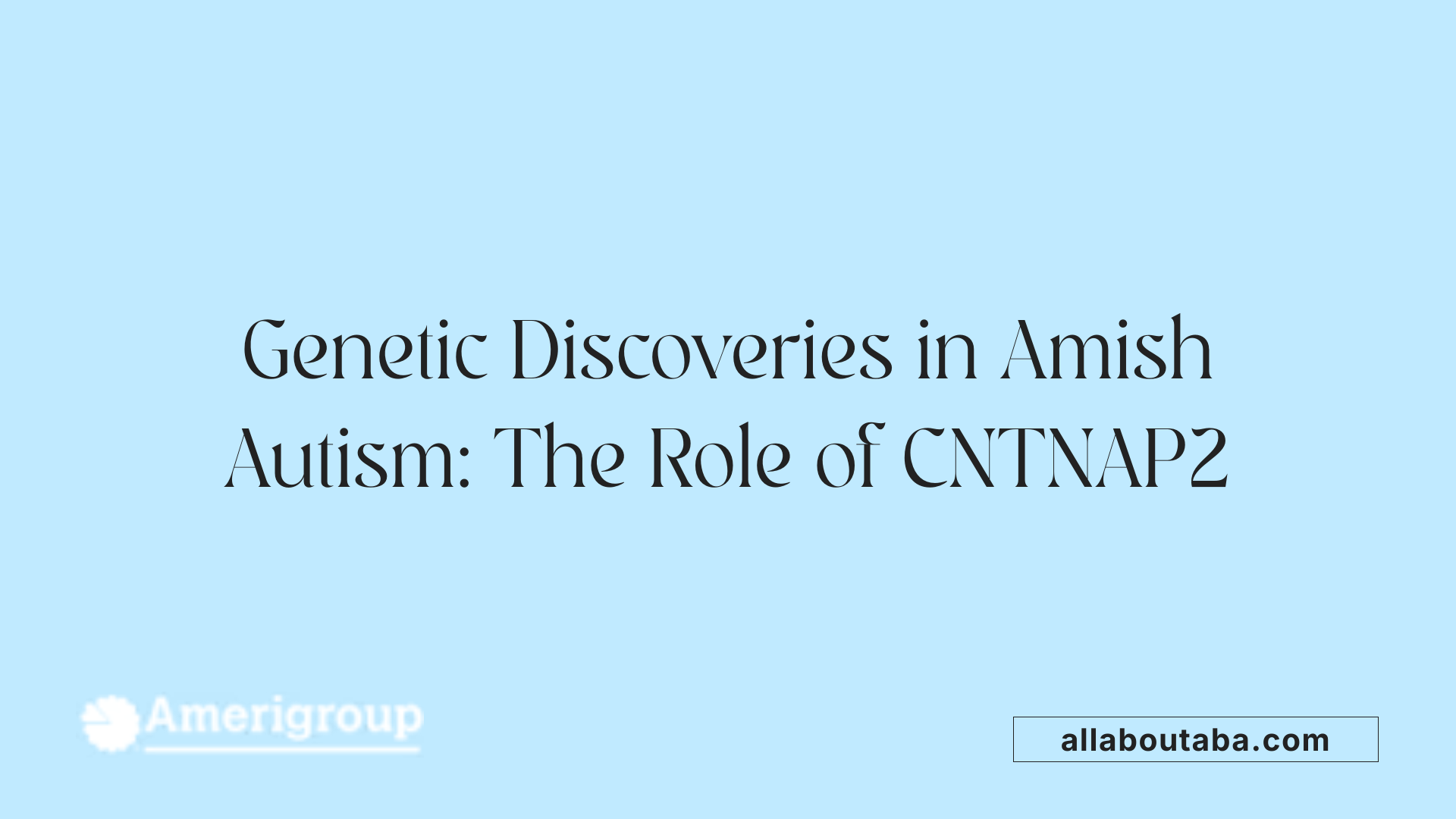 Research in Amish populations regarding autism and related health conditions is still emerging. A notable screening study involving nearly 1,900 Amish children aged 3 to 21 in Ohio and Indiana found an autism prevalence of about 1 in 271 children. This rate is similar to, yet slightly lower than, the general U.S. population's estimate of 1 in 166. The study used standard tools such as the Social Communication Questionnaire (SCQ) and the DSM-IV-TR Checklist for initial screening, followed by in-depth assessments with the Autism Diagnostic Interview (ADI) and Autism Diagnostic Observation Schedule (ADOS). These methods confirmed autism in some children, with variations attributable to differences in reporting styles and diagnostic criteria.
Research in Amish populations regarding autism and related health conditions is still emerging. A notable screening study involving nearly 1,900 Amish children aged 3 to 21 in Ohio and Indiana found an autism prevalence of about 1 in 271 children. This rate is similar to, yet slightly lower than, the general U.S. population's estimate of 1 in 166. The study used standard tools such as the Social Communication Questionnaire (SCQ) and the DSM-IV-TR Checklist for initial screening, followed by in-depth assessments with the Autism Diagnostic Interview (ADI) and Autism Diagnostic Observation Schedule (ADOS). These methods confirmed autism in some children, with variations attributable to differences in reporting styles and diagnostic criteria.
A significant genetic discovery in this community is the identification of a mutation in the CNTNAP2 gene among some affected children. Biopsies revealing cortical dysplasia and a mutation in the CNTNAP2 gene have provided a potential genetic basis for autism in this specific group. Some children with autism carried a single-base-pair deletion in the same gene, reinforcing the link between this genetic variation and neurodevelopmental disorders, including autistic regression and seizures.
The Amish community’s genetic homogeneity, extensive genealogical records, and large families make it a valuable population for studying the hereditary aspects of autism. Researchers are employing advanced genetic technologies, such as next-generation sequencing, to uncover specific gene variants associated with ASD. These efforts may help clarify how inherited genetic factors contribute to autism and aid in identifying potential targets for intervention.
While some barriers exist, such as cultural differences in reporting or diagnosis, studying autism in Amish populations provides essential insights into genetic influences on neurodevelopment. This research could also shed light on how genetic predispositions interact with environmental factors, ultimately advancing our understanding of autism’s complex inheritance patterns.
Environmental and Cultural Influences
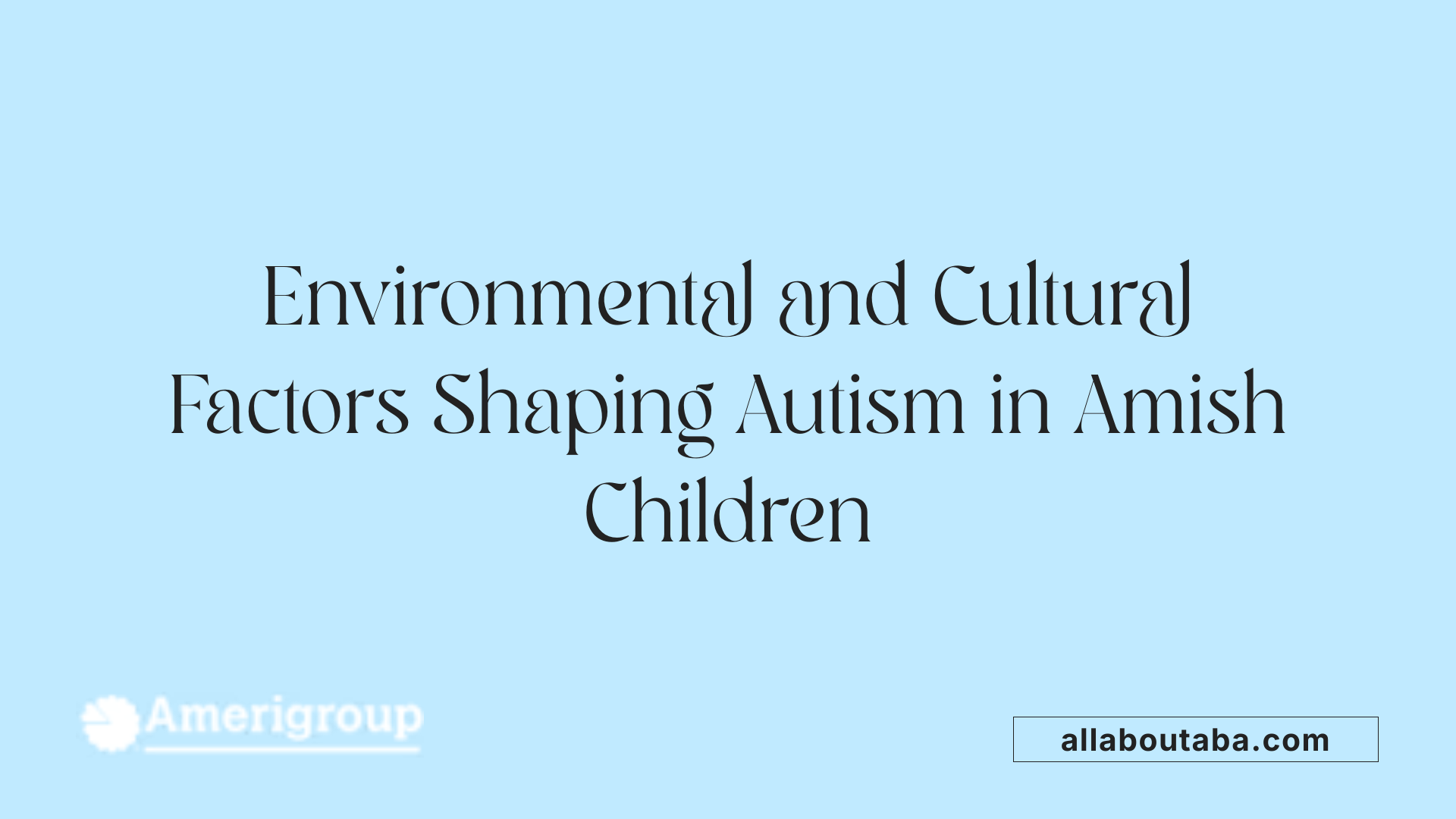
What are common misconceptions about autism rates and causes among Amish children?
Many people believe that autism is either very rare or nonexistent among Amish children, largely due to the community's lifestyle choices and low vaccination rates. However, scientific evidence shows that autism occurs across all populations, regardless of cultural background or vaccination status.
Studies estimate the prevalence of autism in the Amish community to be around 1 in 271 children, which is lower than the general U.S. rate of approximately 1 in 166. Some Amish children have been diagnosed with autism, indicating that this condition is not absent among them.
A common misconception is that Amish children do not develop autism because they are not vaccinated. While most Amish do avoid vaccinations due to religious reasons, some children do receive some immunizations. Additionally, autism is not caused by vaccines, as research has shown no link between vaccination and autism, regardless of vaccination status.
Another misbelief suggests that autistic Amish children behave or experience the world very differently because of their cultural or spiritual environment. In reality, autistic adolescents, including those in Amish communities, typically hold religious beliefs similar to their neurotypical peers. Their experiences—such as supernatural visions or spiritual beliefs—are often attributable to their cultural context or coping mechanisms, not necessarily to their autism.
Overall, autism occurs in Amish children at rates comparable to other populations, and misconceptions often overlook the similarities in how autism manifests across diverse communities. The core understanding is that autism's presence and characteristics are consistent, regardless of cultural or lifestyle differences.
How do environmental exposures unique to Amish life influence neurodevelopment?
Amish life involves certain environmental factors that can potentially impact neurodevelopment. For example, some Amish children have been exposed to environmental mercury, whether through traditional practices or local exposures, which might influence developmental outcomes.
Limited use of modern electronics and pesticides, along with a diet rooted in organic farming, could also affect neurodevelopmental health, although current research is limited in this area.
Biological research has found specific genetic variations, like mutations in the CNTNAP2 gene, associated with autism in Amish children, but environmental contributions cannot be ruled out. The combination of genetic susceptibility and environmental exposures may together influence the risk and expression of autism in the community.
Impact of Lifestyle and Environment on Neurodevelopment
The Amish lifestyle emphasizes simplicity, with reduced exposure to some modern chemicals and pollutants, which might lower the risk of certain neurodevelopmental issues linked to environmental toxins.
A study in Ohio highlights that autism among Amish children might occur at a rate as low as 1 in 15,000, significantly below the national average. This difference may partly result from less exposure to environmental toxins, though more research is needed.
Their lifestyle's protective factors, such as minimal use of chemicals and lower exposure to environmental pollutants, might contribute to the lower observed prevalence of autism in Amish children.
Differences in vaccination rates and their implications
Vaccination rates among Amish families vary, but generally, about 14 percent refuse vaccinations altogether. Despite this, most Amish children receive some vaccines, and the belief that lack of vaccination protects against autism is scientifically unfounded.
Cases of autistic Amish children who are unvaccinated further disprove the myth linking vaccines to autism. Some professionals have suggested environmental factors, including mercury exposure from traditional practices, could play a role in certain cases.
In summary, autism exists among Amish children, though at lower prevalence than in the broader population. Both environmental and cultural realities contribute to their unique developmental landscape, challenging misconceptions and highlighting the importance of understanding autism within diverse communities.
Impact of Vaccination and Misinformation
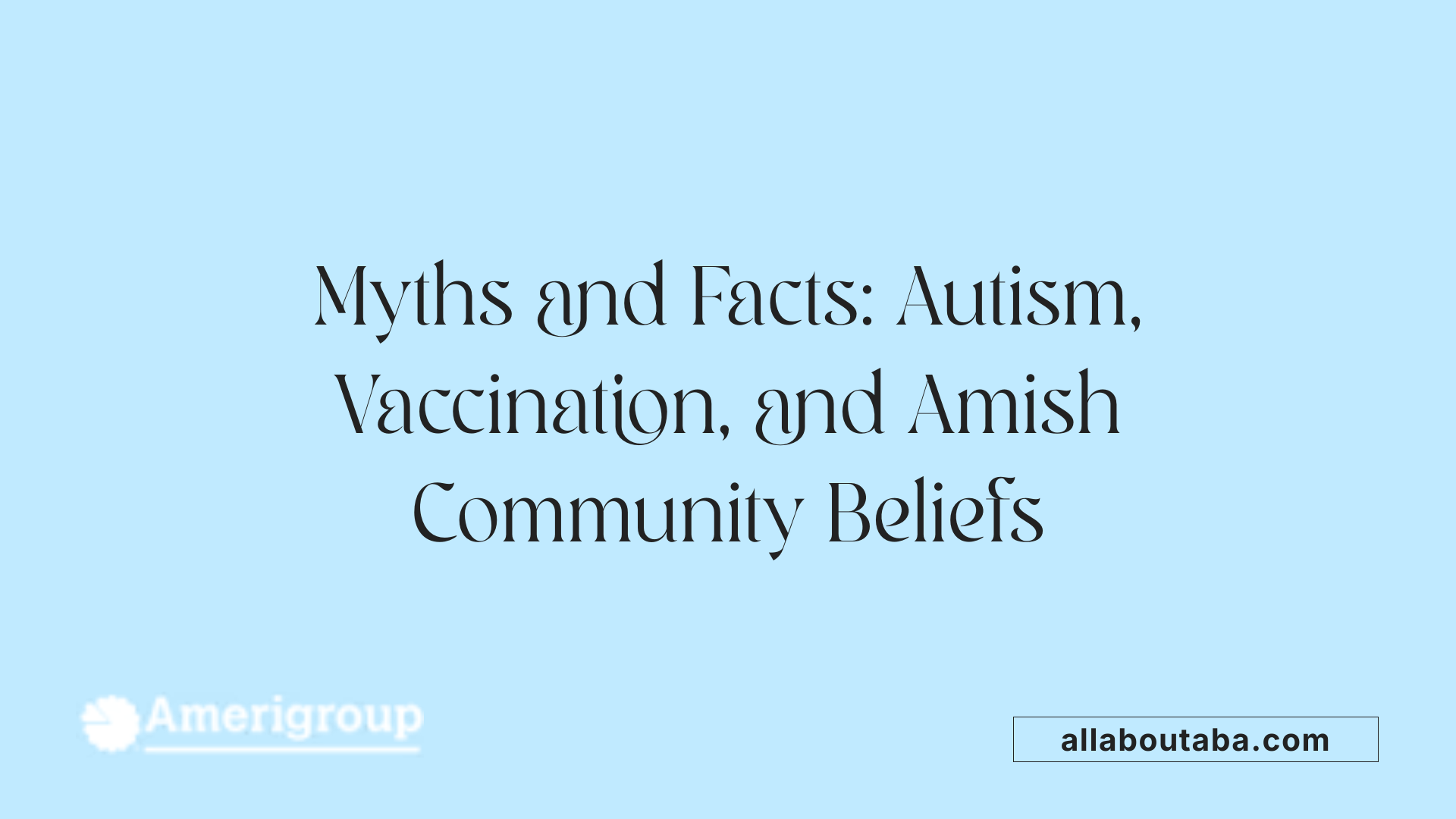
Are there myths or misinformation regarding autism and health issues related to the Amish community?
Yes, there are persistent myths and misinformation surrounding autism within the Amish community. These misconceptions are often fueled by limited access to modern medical information and a reliance on traditional beliefs. A common false belief is that autism is extremely rare or even nonexistent among Amish children, which is not supported by scientific studies. Some also incorrectly link autism to vaccines, specifically suggesting that vaccination causes autism.
In reality, research shows that autism occurs across all populations, regardless of community or lifestyle. The prevalence among Amish children appears to be lower than in the general population, with some estimates suggesting rates as low as 1 in 15,000 in Ohio Amish communities. These lower rates may partly be due to differences in reporting or diagnosis, but they do not support the idea that autism is absent.
Most Amish children have received at least some vaccinations, as around 14% of Amish parents refuse them entirely. The myth that Amish children do not have autism because they are unvaccinated is disproven by scientific evidence, which indicates no causal relationship between vaccines and autism. Multiple studies, including reviews from health authorities like the CDC, have found no credible link between the MMR vaccine and autism.
Understanding these facts helps counteract harmful stereotypes and emphasizes the importance of accurate information. Promoting education about autism can foster acceptance and support for autistic individuals in all communities, including the Amish.
The Significance of Ongoing Research and Future Directions
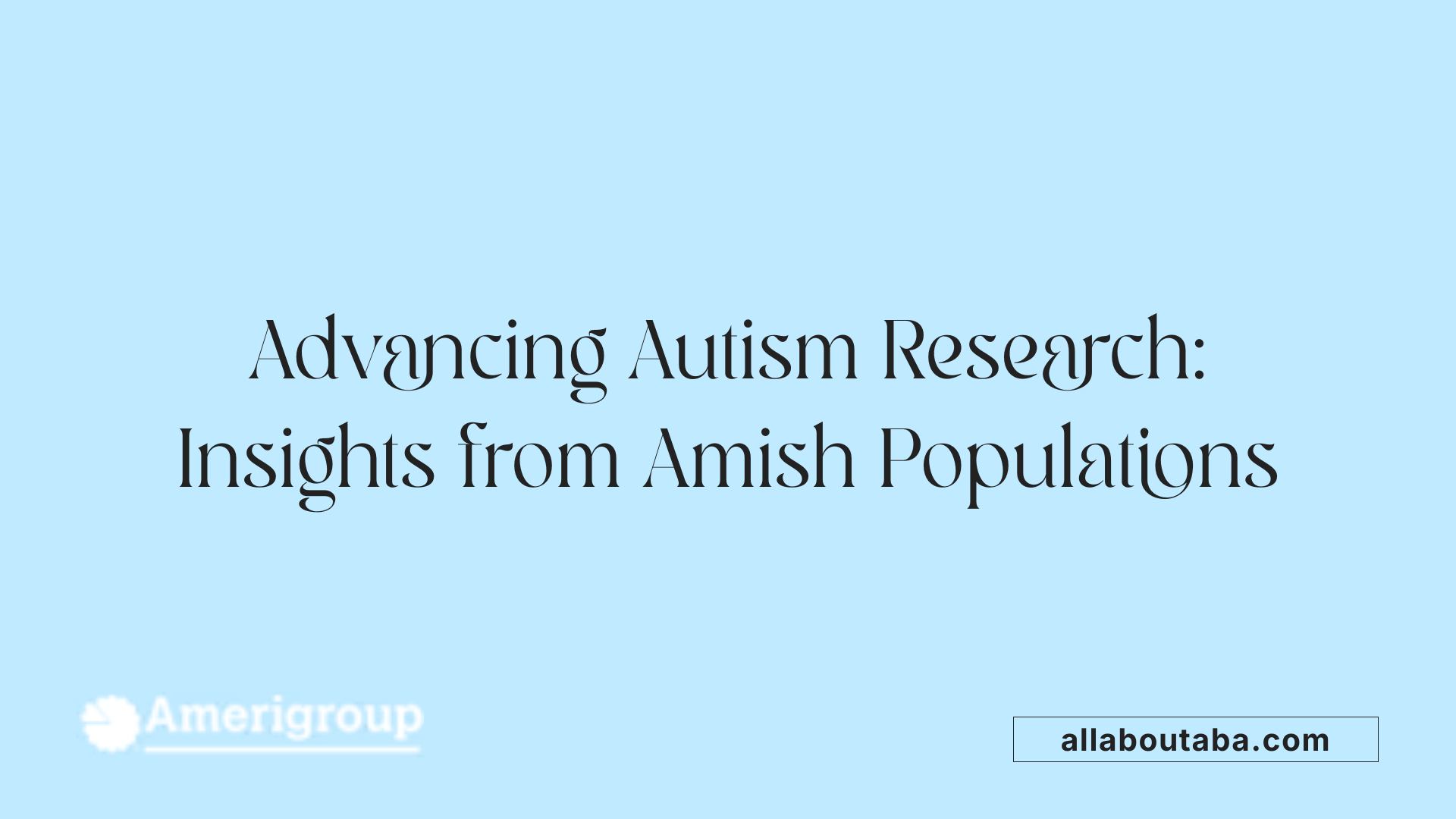
What are some key research directions exploring autism in Amish populations?
Current research efforts are increasingly focusing on uncovering new insights into autism spectrum disorder (ASD) within Amish communities. One promising area involves advanced genetic studies, such as next-generation sequencing, which help identify specific gene variants associated with ASD. The discovery of mutations in the CNTNAP2 gene among Amish children exemplifies how genetic exploration can shed light on potential hereditary factors.
In addition to genetics, researchers are examining how environmental factors interact with genetic predispositions. Factors such as pesticide exposure, heavy metals, and prenatal environmental influences are under scrutiny, especially given that Amish lifestyles often involve specific environmental exposures that could influence neurodevelopment.
The extensive genealogical records and large family sizes characteristic of Amish communities provide a unique advantage for studying hereditary transmission patterns. These resources enable researchers to trace genetic links across multiple generations, improving our understanding of how genetic and environmental factors interplay.
Looking ahead, future investigations aim to refine the understanding of autism’s causes, which could lead to targeted interventions and support. The insights gained from Amish populations are expected not only to deepen knowledge of autism’s etiology but also to inform broader scientific understanding, benefitting diverse populations worldwide.
Bridging Knowledge and Misconceptions
While autism does occur in Amish children, prevalence appears to be lower than in the general population, and the community’s unique genetic and environmental factors play a significant role. Myths, such as the belief that autism is absent or caused solely by vaccines, have been scientifically disproven. Ongoing research, particularly in genetic and environmental domains, offers promising insights into autism’s complex causes. Promoting accurate information and understanding is essential to dispelling stereotypes and supporting autistic individuals within the Amish community and beyond, ensuring that misconceptions do not hinder their inclusion and access to care.
References
- Prevalence Rates of Autism Spectrum Disorders Among the Old ...
- Gene associated with seizures, autism, and hepatomegaly in an ...
- False Claim About Cause of Autism Highlighted on Pennsylvania ...
- Explaining Low Rates of Autism Among Hispanic Schoolchildren in ...
- [no title] — Beyond Pesticides
- Anti-vaccine myth that Amish children don't have autism resurfaces
- Prevalence Rates of Autism Spectrum Disorders Among the Old ...
- Explaining Low Rates of Autism Among Hispanic Schoolchildren in ...







